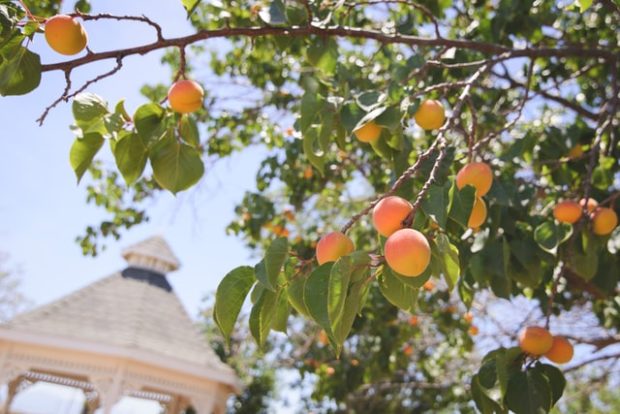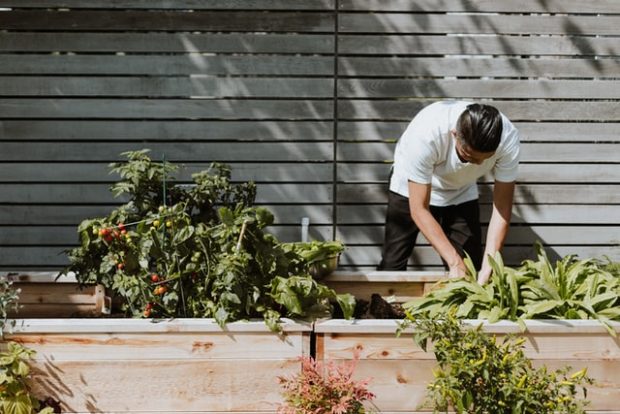In these trying times, more and more people are looking to grow their own food. It can be a great way to provide for your family and save money on groceries. At the same time, you can get in some exercise and enjoy the outdoors. You may be wanting a guide to design a garden or be in search of some useful tips and tricks. If so, you should read this article because it will tell you all you need to know.
Plant Some Fruit Trees
Not only do they provide fresh fruit, but they can also be a beautiful addition to your property. Some key examples of fruit trees are apples, pears, quinces, plums, peaches, apricots, and cherries. With these types of trees, you can expect to yield lots of fruit each season. For instance, standard apple trees typically yield 10-20 bushels of fruit, while standard nectarine trees yield around 3-5 bushels.

Some varieties of dwarf fruit trees include apricots, figs, nectarines, and peaches. These smaller trees are easier to care for and don’t require as much space as traditional fruit trees. The internet can help you discover the fastest growing fruit trees, and you can view tips on choosing and planting. There’s information on everything from avocados to mulberries, and articles about acid soils and fire-resistant trees.
Invest In Some Quality Tools
If you’re serious about growing your own food, this is important for a few reasons. First, you need the right tools to do the job properly. Second, the wrong tools will make the task frustrating and far from enjoyable. Third, good-quality tools will last longer and save you money in the long run. Here is a list of essential tools that every gardener needs:
- A hoe or spade for digging
- A rake for leveling soil or removing debris
- A watering can or hose for watering plants
- Pruning shears for trimming plants
- Gardening gloves to protect your hands

Another essential tool is a wheelbarrow, which will make it much easier to transport soil, compost, and other materials around your garden.
Get A Good Garden Planner
Garden planners help you map out your garden and decide what to plant where. This is important because it helps you make the most of your space and ensures that your plants have enough room to grow. When choosing a garden planner, decide what kind of information you want to track, such as the progress of your plants and the weather conditions in your area.
If you’re new to gardening, you may want to start with a simple planner. As you become more experienced, you can move on to more complex versions. If you’re looking for a garden planner that’s easy to use and always available, consider a garden planning app. They’re designed for people who want to grow their own food but don’t have a lot of time or experience. Decide how much food you want to grow, and what types of crops you want. Once you’ve set some goals, it’ll be easier to create a plan and stick to it.
Choose The Right Location
When you’re choosing a location for your garden, make sure that the area gets enough sunlight, as this is essential for most crops. You’ll also need to ensure that the area has good drainage so that your plants don’t get waterlogged. Raised beds are a great option for small gardens or yards. They have essentially raised areas of soil that are surrounded by some type of frame, making them higher than the surrounding ground.
Raised beds can be beneficial for several reasons. First, it can help to improve drainage in your garden since the raised bed will allow water to drain away from your plants more easily. It also allows you to control the quality of the soil more simply, as you can add in amendments and mix it up to create the perfect growing environment for your plants. Finally, raised beds can make gardening easier on your back since you won’t have to stoop down as far to tend to your plants.
Prepare The Soil, Then Plant And Maintain Your Crops
This involves removing any weeds or debris, and loosening up the soil so that your plants can easily take root. It’s also important to add some organic matter to the soil, such as compost or manure. This will help to improve the quality of the soil and provide valuable nutrients for your plants. Make sure that you plant everything at the correct depth and spacing, so it has enough room to grow, and water your plants regularly.
Mulching is a process where you cover the ground around your plants with materials like straw, leaves, or bark. This helps to keep the soil moist and prevents weeds from growing. It also helps to insulate your plants from extreme temperatures. Pruning is the process of trimming dead or dying leaves and branches from your plants. This helps them to stay healthy and promotes new growth. Pruning also makes your plants look nicer and can increase the yield of fruits and vegetables.
Harvest Your Crops And Store Them Correctly
Once your crops are ready, it’s time to harvest them. Be sure to carefully follow the instructions for each type of crop so that you don’t damage the plants. For instance, some vegetables should be picked when they’re still immature, while others should be allowed to ‘fully ripen on the vine’.
After you have harvested your crops, it is important to store them properly so that they will last. Depending on the type of crop, you may need to keep them in a cool, dark place or in a more humid environment. Be sure to do your research so that your food will stay fresh and delicious.
With these tips, you should be well on your way to successfully growing your own food. Just remember to have patience, as gardening takes time and effort. Having said that, the end result will be worth it when you can enjoy the fruits (or vegetables!) of your labor – both now and for many years to come.
